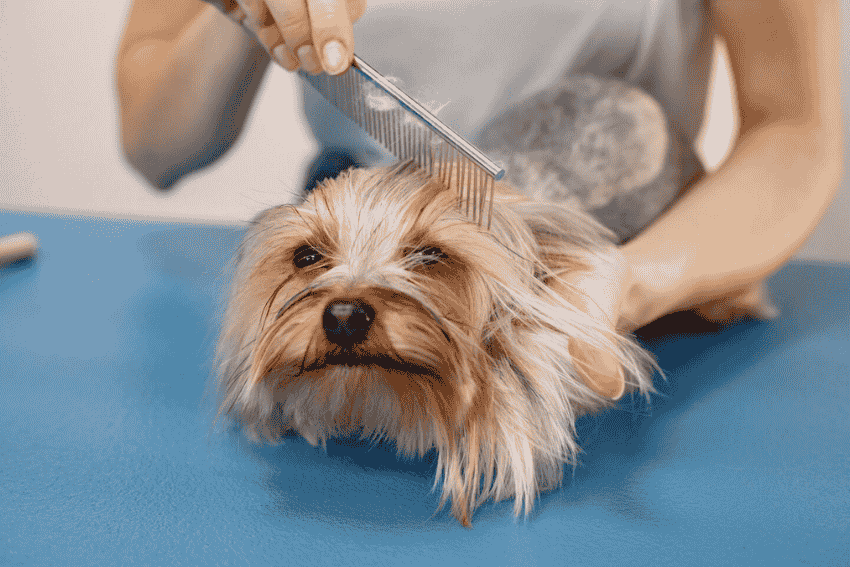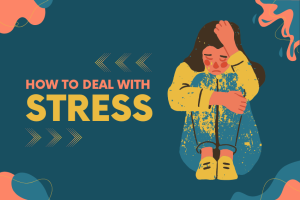Hairy dogs are beautiful… until they turn your house into a giant lint trap. You vacuum. You sweep. Your lint-roll your life. But no matter what you do, fur keeps showing up where you don’t want it. If you’ve ever found dog hair in your coffee mug, this is for you.

The thing is that shedding isn’t something you stop. It’s something you outsmart. This guide walks you through what really causes shedding, the tools that work, and the weekly habits that finally make a dent. You don’t need to shave your dog. You need a better system.
What Causes Excessive Shedding in Hairy Dogs?
You’re told it’s “Just part of having a dog,” but no one told you it would be this bad. The hair never ends until you understand what’s really going on. Your dog’s body doesn’t respond to heat. It responds to daylight. The longer the days, the more fur they shed. This natural response is called photoperiod shedding, and it happens mostly in spring and fall when dogs “blow their coat” in waves. If your dog lives indoors under artificial light, this shedding can become constant year-round. And when combined with their natural hair cycle (grow, rest, release), you get what feels like an avalanche of fur. It’s not random. It’s biology.
The whole cycle is called anagen (growth), catagen (transitional), and telogen (resting). After telogen, the dog’s hair naturally falls out to make room for new growth.
Dogs who have double coats have dense undercoats built for insulation and protection. When that undercoat loosens, it doesn’t fall out neatly, it clumps and spreads. Some breeds, like Huskies and Golden Retrievers, are genetically wired to shed more than others. And if your dog is itching more than usual or losing fur in patches, it might be more than just a seasonal shed.
Here’s what makes it worse: many dogs spend most of their time in temperature-controlled, artificially lit homes. That light confuses their natural rhythm, and their bodies treat it like a constant spring. More daylight = more shedding. Even their diet, stress levels, or household allergens can influence how much hair they lose. While shedding may be normal, unending shedding often has a deeper root cause. And the more you learn to spot those clues, the easier it becomes to manage it without feeling overwhelmed.
Top Tools and Brushes for Managing Shedding
Some brushes are built to look helpful. Others are built to be helpful. Slicker brushes only touch surface fur. But if your dog has a dense undercoat, that won’t cut it. You need brushes that go deep. Like an undercoat rake or deshedding tool. This pull-out dead fur before it reaches your rug. The FURminator, for example, is a favorite among owners of Huskies, Goldens, and Shepherds.
Want to go to a pro? Add a high-velocity dryer into the mix. These tools blow-dry your dog’s loosened hair in seconds. It’s a full coat reset between baths. With the right tools, you can save yourself from a lot of mess. Robot vacuums are also part of many owners’ daily routines. They don’t reduce shedding, but they manage its aftermath.
Supplement-wise, Omega-3s may help improve coat condition over time. Just make sure they’re vet approved. And don’t forget storage. A fur-covered brush left in a drawer spreads more mess. Keep everything in one easy-to-access box near your grooming area. Convenience makes consistency easier, and consistency is what really makes shedding manageable.
And here’s a pro tip: always brush before bathing, not after. Because wet fur tangles fast, especially on long-haired breeds. Brushing the coat before a bath helps prevent mats and allows shampoo to reach the skin more effectively. If you’re using multiple tools, start with the slicker to loosen surface hair, then follow with the rake for deeper fur. Finish with a short burst from a dryer outdoors. This combo doesn’t just reduce hair on your floors; it makes your dog more comfortable.
Also Read – Husky Shedding Survival Guide: Tools, Tips, and Tricks
How to Groom Your Hairy Dog to Reduce Shedding
Here’s where the biggest myth gets busted: shaving your double-coated dog does not stop shedding. In fact, it can ruin the coat’s ability to regulate temperature and protect from sun damage. Instead, adopt a 30-minute weekly routine to manage hair loss:
- 10 minutes: Line-brush using a slicker or undercoat rake
- 10 minutes: Damp towel wipe + high-velocity dryer outdoors
- 10 minutes: Swap bedding + spot vacuum where your dog rests
During seasonal blowouts, add:
- A warm bath every 2–3 weeks with deshedding shampoo
- Full blow-dry and post-bath brush-out session
These steps won’t eliminate shedding, but they will make it far more manageable.
Do you want to go even further?
- Do a quick skin check while brushing. Feel for bumps, flakes, or scabs
- Brush after a walk, when your dog is calm
- Use treats to associate grooming with something positive
- Note resistance or avoidance. It might signal pain or sensitivity
- Talk to a groomer or vet if your dog avoids being brushed in specific spots
You can also rotate your tools based on the coat’s thickness. Use the slicker for daily upkeep, the rake every few days, and the dryer on the weekend for full resets. If you’re short on time, doing smaller sessions more often can work better than a long one. Breaking grooming into chunks also keeps your dog less anxious and more cooperative.
When to Consult a Veterinarian
Some shedding is normal. But not all shedding is. If you are noticing your dog’s coat thinning fast. Or you see red skin, bald patches, or nonstop scratching avoid brushing. Shedding can also happen because of underlying problems like parasites, fungal infections, thyroid disease, or poor nutrition. It can also be severe in some seasons, or in specific areas of your place. So, if you notice these seasonal and place specific patterns you might need to visit a vet.
Also if your dog itchy after grooming every single time, it may not be just dry skin. It could be inflammation from shampoo ingredients, poor drying, or even an allergy that’s been quietly developing over time. Your dog might not tell them, but their coat will tell you what is wrong. If you notice a sudden rise in your dog’s fur loss, pay a visit to your vet at the earliest. A quick skin scrape, blood panel, or dietary check can uncover issues before they become painful or expensive.
Sometimes, it’s more than just those. Look for excessive licking, unusual odor, or scabs. These are coat distress signals that many pet owners overlook. Vets often find overlooked conditions like seborrhea or food sensitivities during shedding consultations. That’s why getting an early diagnosis can save you money, but more importantly, it keeps your dog from discomfort that can spiral into more serious issues.
Conclusion
You can’t control your dog’s biology. But you can control the routine.
With the right brush, a solid plan, and some smart tweaks, you’ll stop reacting to the shedding and start managing it.
And if your dog gets itchy after grooming, pay especially close attention. Your dog’s comfort matters just as much as cleanliness. You’ve got the knowledge. Now it’s time to put it to work and reclaim your home from the fur storm.


